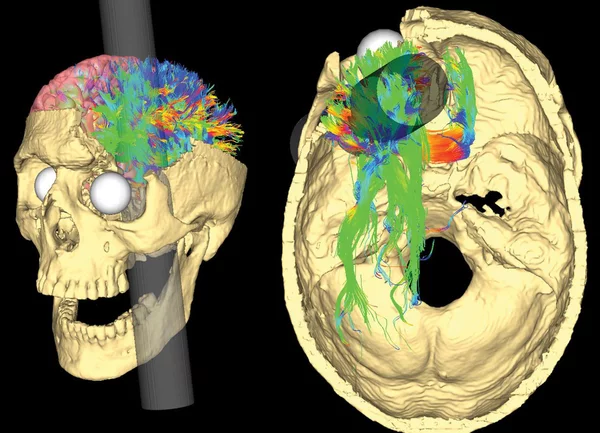The life you save may not be the patient you’re treating.
A head trauma patient may not be as lucky as Phineas P Gage. If you’re not familiar with his story, briefly he had a pointed iron rod 1 ¼ inches in diameter and 3 feet 7 inches log enter under his left eye and exit out the top of his skull and landed 80 feet away after passing through his brain and he lived for 12 years after the incident.
If your patient has a non-survivable blunt or penetrating head injury, they might be an organ donor to save others. We don’t check IDs to see their donor status, but what’s good for the patient is good for the donor. Less than 2% of all deaths each year are brain death deaths. Brain death is the complete and irreversible cessation of the brain and brain stem; the legal, medical, and ethical definition of death. Time of death is recorded when brain death is declared, NOT when the heart stops.
Brain death clinical examination requires:
Absence of shock (BP>80)
Core temperature >90 F or 32 C
Absence of neuromuscular blockade
Absence of sedatives/CNS depressants
Absence of severe metabolic disturbances
Unresponsive to intensely painful stimuli
Pupils non-reactive
Absent corneal reflexes
Absent response to upper and lower airway stimulation (pharyngeal and ET suctioning)
Absent ocular responses to vertical and horizontal head turning (Doll’s Eyes)
Absent ocular response to bilateral irrigation of the ears with 50 ml of ice water
Some hospitals may also do an Apnea test, an EEG or a nuclear medicine cerebral flow study. As the mayor of the Munchkin City in the Land of Oz stated of the Wicked Old Witch “As coroner I must aver, I thoroughly examined her and she’s not only merely dead, she’s most seriously dead.”
So aggressively treat your patient assuming they may survive. If they meet brain death criteria you could be saving others. Organs that can be transplanted are the heart, kidneys, liver, pancreas, and intestine. The skin, bone tissue (including tendons and cartilage) eye tissue, heart valves and blood vessels are transplantable forms of tissue.
References:
BMJ. 1998 Dec 19; 317(7174): 1673–1674.
doi: 10.1136/bmj.317.7174.1673a
Cabinet-card portrait of brain-injury survivor Phineas Gage (1823–1860), shown holding the tamping iron that injured him.
Two renderings of Gage’s skull show the likely path of the iron rod and the nerve fibers that were probably damaged as it passed through.
Van Horn JD, Irimia A, Torgerson CM, Chambers MC, Kikinis R, et al./Wikimedia
Organ Procurement and Transplantation Network
https://www.organdonor.gov/
Personal notes and experience as a Certified Procurement Transplant Coordinator for 5 years.



